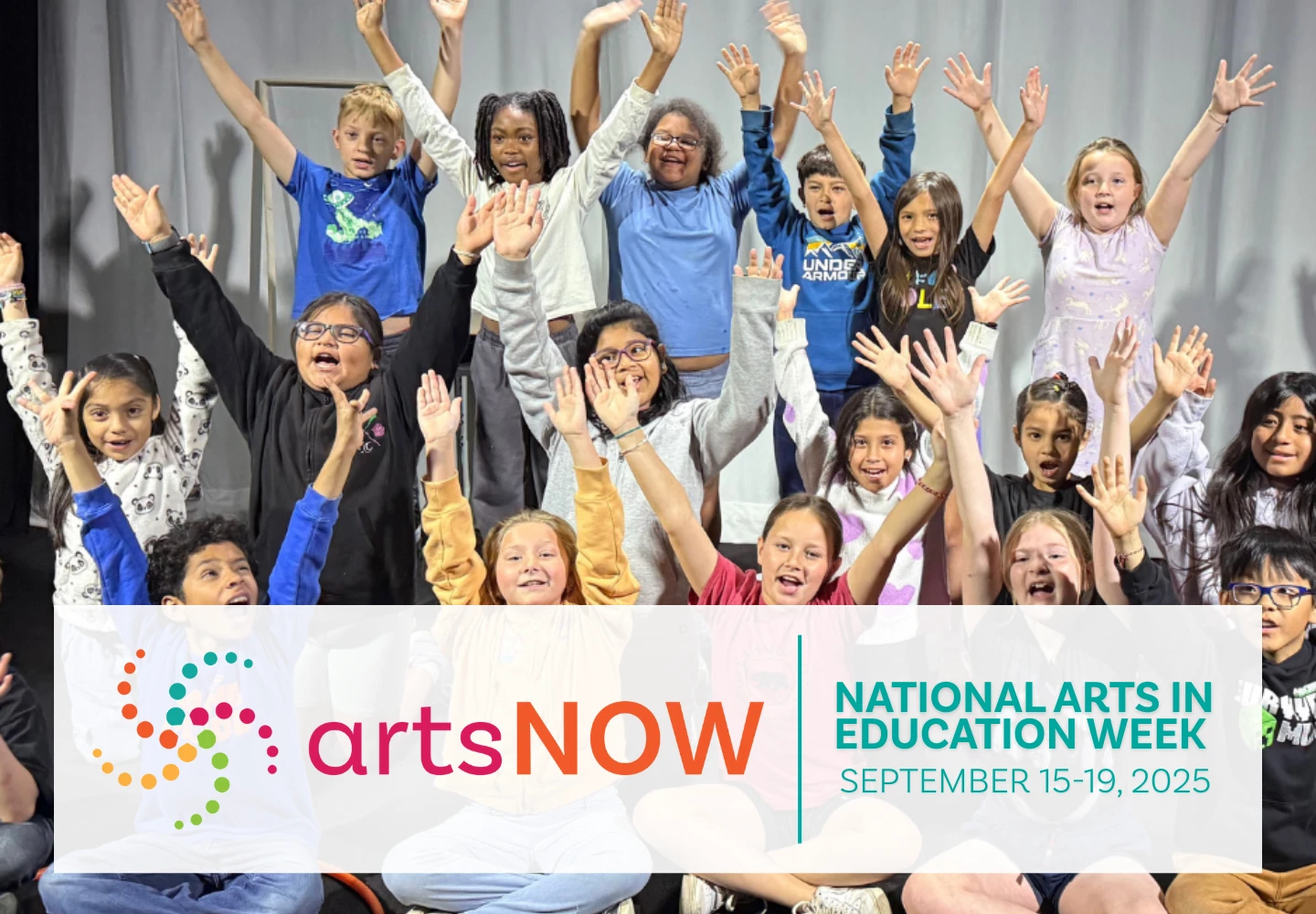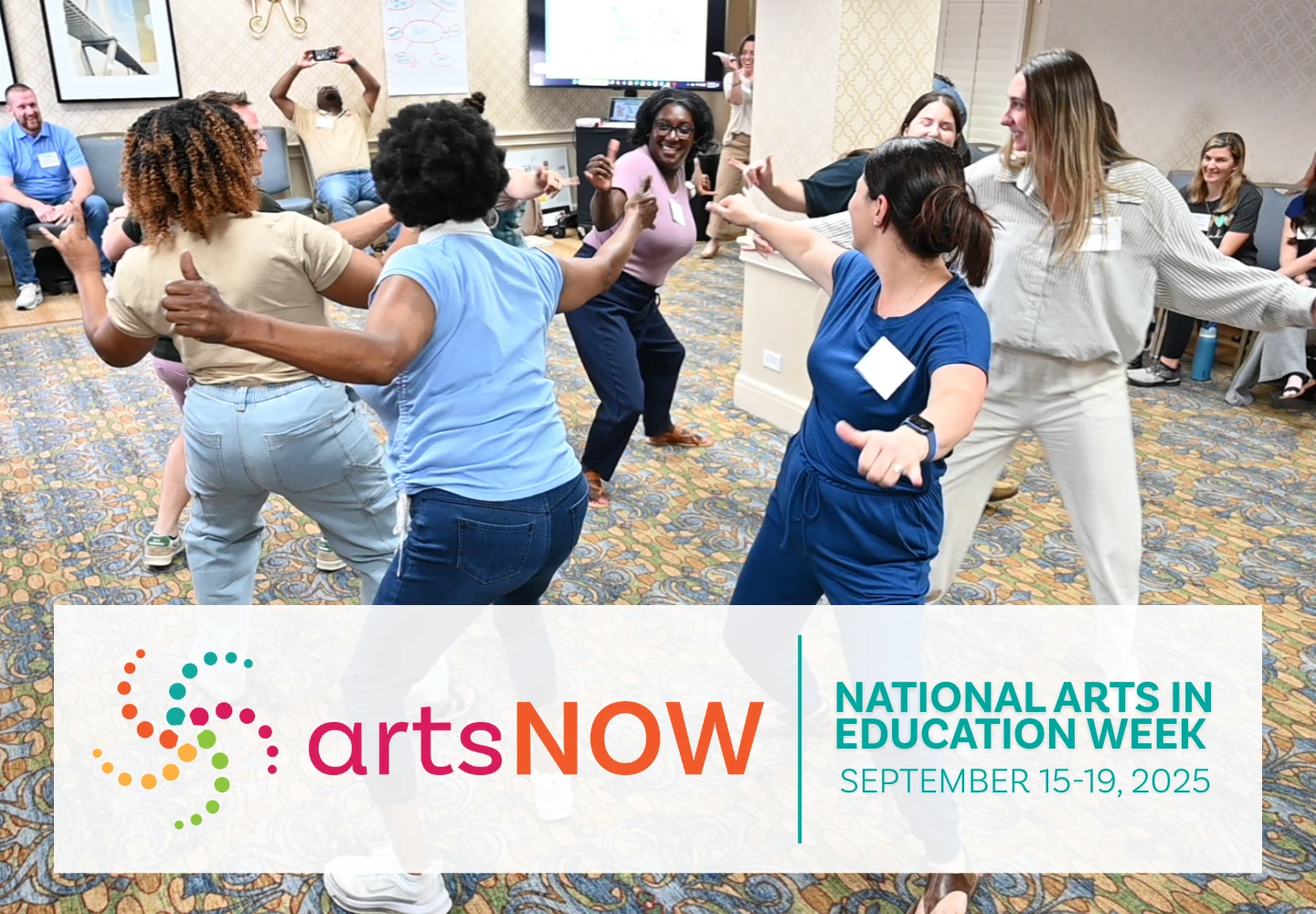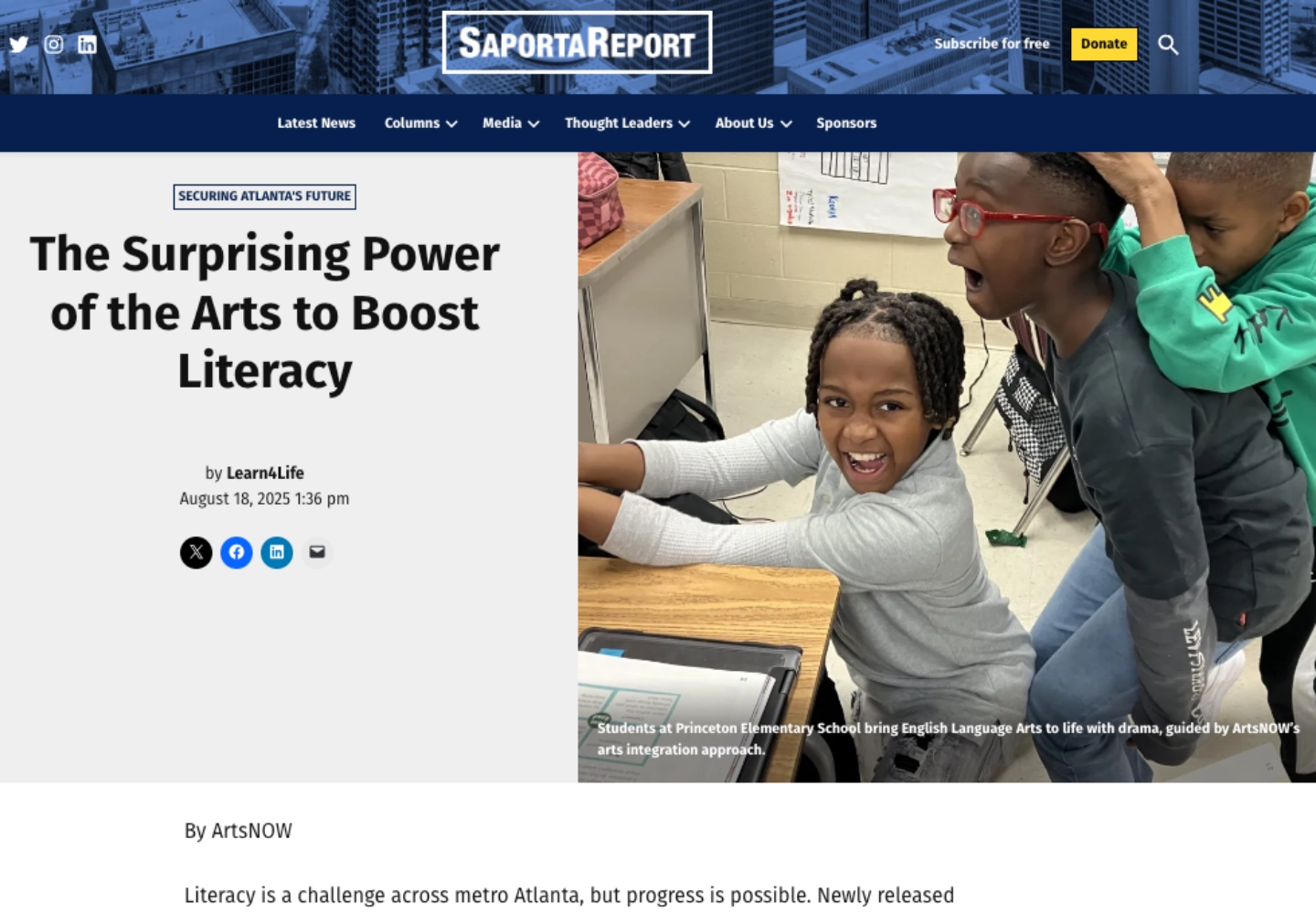Make Your Impact Before The Year Ends
Make Your Impact Before The Year Ends
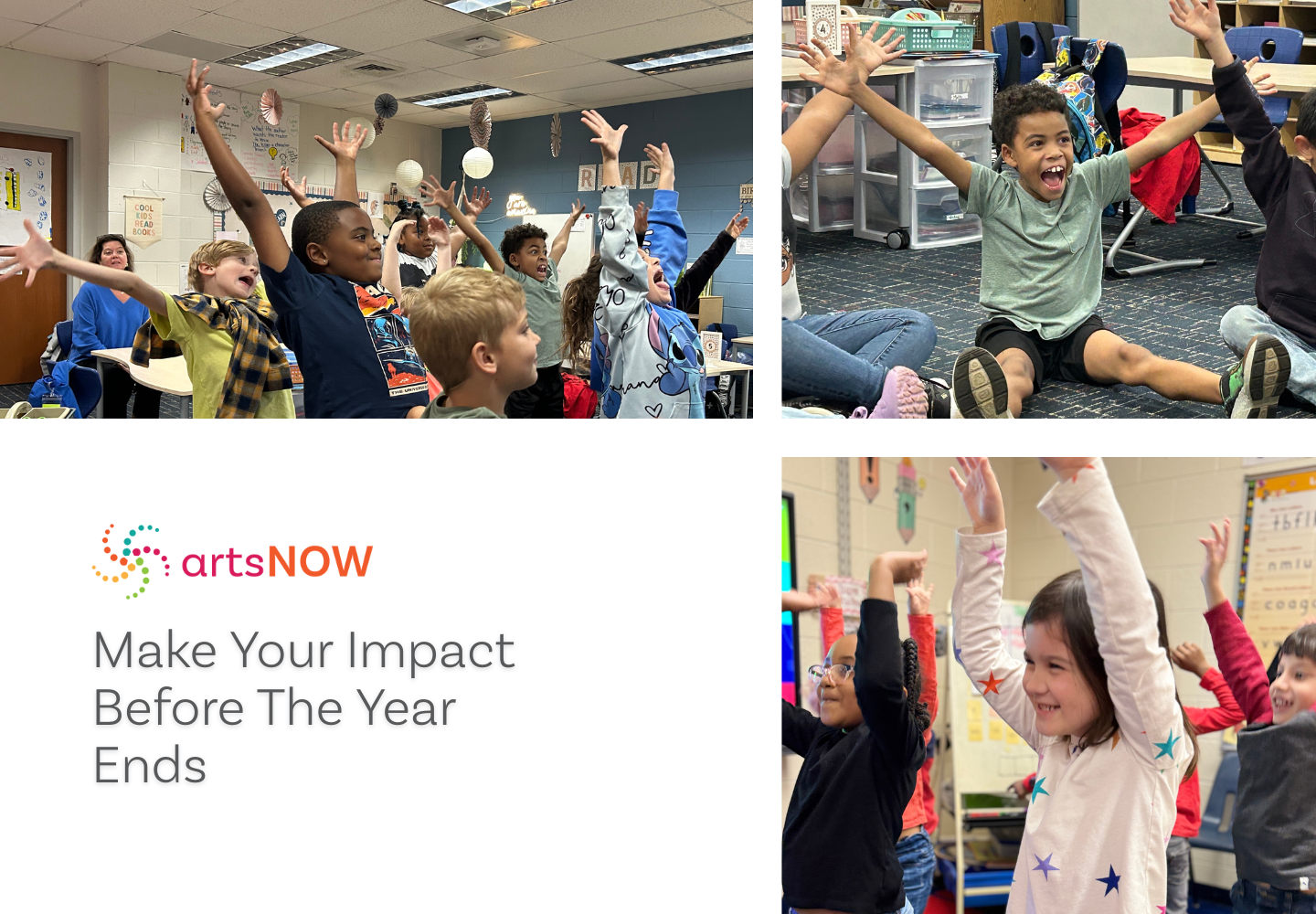
As we reflect on a year of growth and creativity, we’re deeply grateful for your support. If you’re making end-of-year giving decisions, we hope you’ll consider ArtsNOW among your final gifts this season.
As the year comes to a close, it’s time to embrace the spirit of generosity and make a meaningful impact through end-of-year giving. This period is ideal for individuals, families, and businesses to give back to causes they care about deeply. This is a powerful time for nonprofits, with nearly one-third of giving happening in December across the entire sector.
No matter how you choose to give to ArtsNOW, each gift translates into hands-on arts experiences, teacher support, and resources that help students build creativity, critical thinking, and collaboration skills.
Why Year-End Giving Matters
Across the country, year-end generosity sustains nonprofits. For many organizations, December donations account for 30-40% of one-time online gifts. That surge funds immediate needs and helps set the stage for the year ahead.
At ArtsNOW, your end-of-year gift ensures that young minds have access to arts-integrated learning. It also gives us the momentum to start the new year strong and ready to bring innovative arts experiences into more classrooms.
Tax Benefits of Giving Before December 31
Timing matters. To receive a charitable tax deduction for the year, donations must be made on or before December 31. Online gifts are the fastest way to ensure your gift is processed on time.
If you’re giving through a donor-advised fund or stock transfer, plan ahead as these methods can take extra time to complete. By making your gift before the deadline, you may be eligible for certain tax advantages while also fueling work that directly impacts students. We encourage you to consult your financial advisor or financial institution to understand how giving may benefit your personal situation.
What Your Gift Makes Possible
Every contribution, no matter the size, drives real impact. With our Impact Catalog, you have the power to choose the impact you want to make. Each gift in the catalog is an opportunity to give with purpose. There are opportunities at every level to spark imagination and innovation. No matter the size, your gift helps ignite a lifelong love of learning and the arts.
- Inspire Students - Every gift to ArtsNOW fuels creativity and learning. Your support reaches students directly through arts-integrated experiences and empowers teachers to inspire them in lasting ways. We invite you to make a difference in students’ lives, just as the arts may have shaped your own.
- Empower Educators - You can help empower educators to teach in ways that reach every learner. Whether through hands-on workshops, school-based coaching, or collaborative planning sessions, your gift fuels professional learning that transforms classrooms.
- Enrich Classrooms - Materials and supplies make a difference by turning ideas into experiences and lessons into lasting memories. You hold the power to put high-quality tools directly into the hands of students and teachers. From arts-integrated classroom kits to supply grants, your gift helps create learning environments where imagination, exploration, and expression are part of every day.
Your generosity ensures that classrooms remain places where creativity thrives and students are prepared with the skills they need for the future.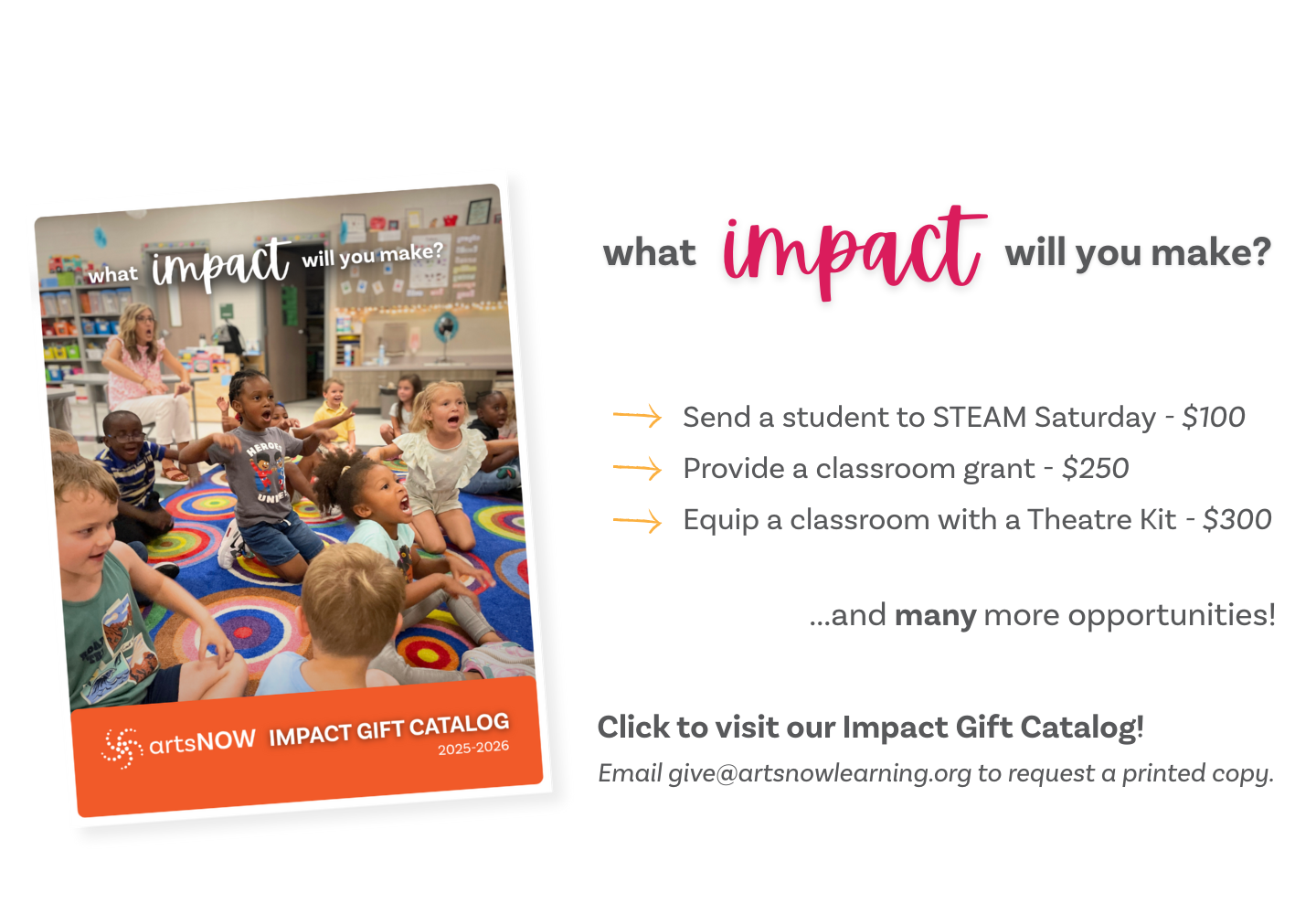
Giving That Works
When you choose to make a year-end gift to ArtsNOW, you join a community of donors across the nation who step up in December to make the biggest difference.
Together, we can close the year with strength and open the next one with promise.
How to Give
- Online: Make a fast, secure gift through our website by December 31. One-time, monthly, and annual options are available.
- Impact Giving: View our 2025 Impact Catalog here and choose a gift that speaks to you. To request a print version of the catalog, please email [email protected].
- By Mail: Send a check dated by December 31 to 2905 Premiere Parkway, Suite 125, Duluth, GA 30097.
- Donor-Advised Fund, Qualified Contribution, or Stock Gift: Contact your fund manager or broker soon to meet year-end processing deadlines.
Make a Lasting Impact with ArtsNOW
End-of-year giving is a way to directly shape the opportunities students have in their classrooms. By giving today, you’re ensuring that creativity, equity, and innovation remain at the heart of education.
Join us before December 31 and help transform learning through the power of the arts.

